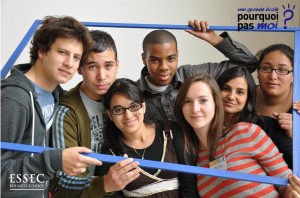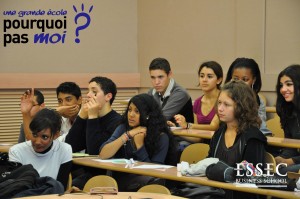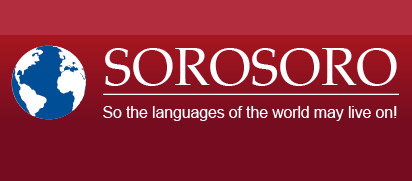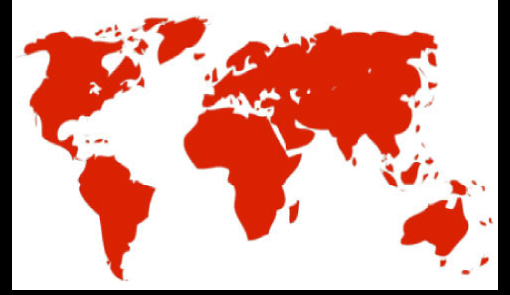Print  |
|


Recognising the bilingualism of migrants’ children: an asset for integration
Posted by Anna Stevanato on May 14, 2011
By Anna Stevanato, founder of the association D’UNE LANGUE A L’AUTRE.

Une Grande Ecole, pourquoi pas moi ?
“Une Grande Ecole: Pourquoi pas moi?” (PQPM) is an assistance program for middle and high school students from low-income backgrounds and living in difficult areas. It is aimed at increasing their chances of pursuing an ambitious higher education
So what’s the connection to languages and bilingualism? Most of the students (82% of 72 students) enrolled in this program happen to speak or understand a language other than French.
The association D’une Langue A L’Autre (DULALA), whose objective is to recognize and promote all sorts of family bilingualism, takes part in the PQPM program with interventions for teenagers in the linguistic field.
Enduring prejudices
The first experiences have shown that prejudices are still very much alive within communities speaking non-European family languages.
To the question “What language do you associate with French when talking about bilingualism?”, 75% of students answered English, 5% said Spanish, 5% said Portuguese and only 15% mentioned other languages (Turkish, Japanese, Hebrew, Lingala, Bengali, Creole).
The idea that only majority European languages are worthy of being mentioned regarding bilingualism is deeply rooted:
“Miss, is someone bilingual when speaking other languages that French and English?” asks J., 8th grade student.
“Bilingualism is an asset if you speak English or Spanish… other wise, what’s the point?” claims B., 10th grader.
“My father is plurilingual, he speaks 4 languages: French, English, Tamil and Urdu” says B. “Yes, but they are sub-languages” retorts C., 8th grade student.
Thoughts on the practice of bilingualism itself may also be negative: “Two languages at the same time in someone’s head are too much. One should learn one language at a time”.
“A teacher told us that we use approximately 6,000 words. Is this amount divided in half when we’re bilingual? Or by 3 when we’re trilingual?”, 10th grader F. wonders.

Une Grande Ecole, pourquoi pas moi ?
Giving a taste for languages, whatever they are
Through playful interventions, DULALA has started to transform the opinion of these students on the diversity of languages and deconstruct their negative relation towards their own languages. To these teenagers who rarely consider themselves as bilingual or think of it as a handicap, the association explains that not only is it not an obstacle towards integration to speak languages other than French and English, it is in fact an asset, a linguistic and cultural richness. Working on self-esteem plays a dynamic role in a successful education.
Certain students thereby express their taste for learning:
“This workshop made me want to learn Arabic” says 8th grader A. whose original language is Algerian.
“Tonight, I’m going to speak Bambara with my mother, it’ll be fun!” decided O., 10th grade student.
“I found out that I was a passive bilingual!” says 10th grader P.
“I’ve also found out that one could be bilingual without knowing how to read of write”, discovered L., also in the 10th grade.
Everybody’s freedom of choice
“I only speak Turkish with my parents. Here, I can’t”, claims J, student in the 10th grade.
Indeed, sharing a word or sentences in one’s own mother tongue is far from being common: some of them do it proudly with a visible enthusiasm, whereas others are more discreet and intimidated, and some would rather speak a foreign language learned in school than their own mother tongue.
Ethnic, family of linguistic reasons can push someone to not want to be clearly identified as a representative of a certain language or country. This choice should be respected and the student involved should have the opportunity to show interest, speak and share this language if he or she wants to.
A language is far from neutral. It doesn’t only carry sounds; it takes us back to our deepest origins.








